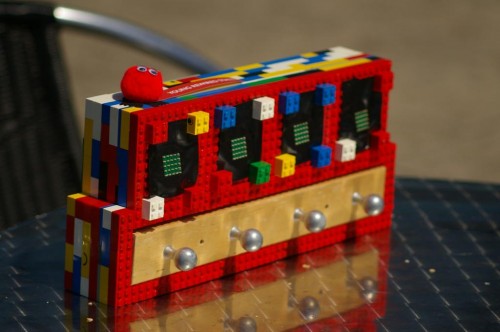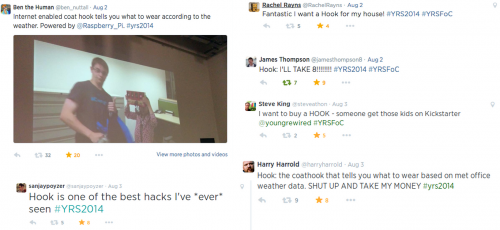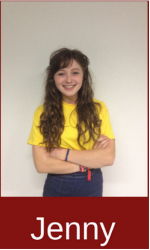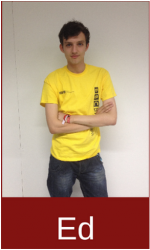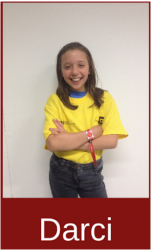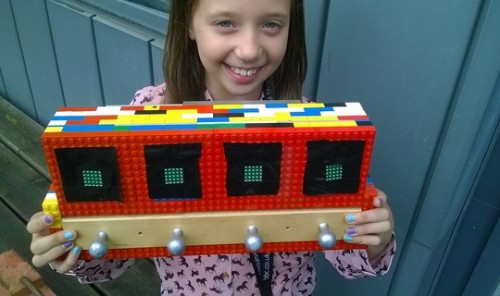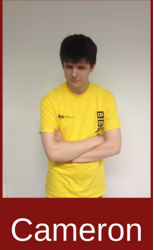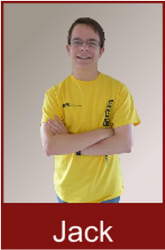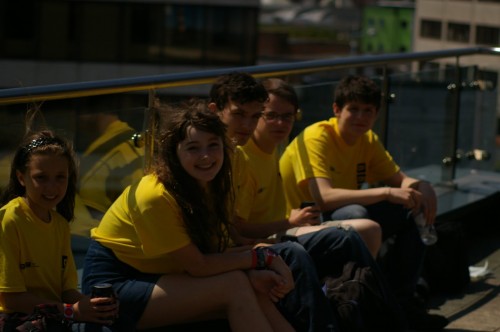|
A new European study has found that Kindle owners have a harder time recalling key plot points than paperback readers. The study, presented in Italy at a conference last month gave 50 readers the same short story by Elizabeth George to read. Half read the 28-page story on a Kindle, and half in a paperback, with readers then tested on aspects of the story including objects, characters and settings. Anne Mangen of Norway’s Stavanger University, a lead researcher on the study said “The Kindle readers performed significantly worse on the plot reconstruction measure.” The readers struggled to make sense of the key 14 plot aspects. The researchers suggest that “the haptic and tactile feedback of a Kindle does not provide the same support for mental reconstruction of a story as a print pocket book does”. “When you read on paper you can sense with your fingers a pile of pages on the left growing, and shrinking on the right,” said Mangen. “You have the tactile sense of progress, in addition to the visual … [The differences for Kindle readers] might have something to do with the fact that the fixity of a text on paper, and this very gradual unfolding of paper as you progress through a story, is some kind of sensory offload, supporting the visual sense of progress when you’re reading. Perhaps this somehow aids the reader, providing more fixity and solidity to the reader’s sense of unfolding and progress of the text, and hence the story.” “We need to provide research and evidence-based knowledge to publishers on what kind of devices (iPad, Kindle, print) should be used for what kind of content; what kinds of texts are likely to be less hampered by being read digitally, and which might require the support of paper,” said Mangen. “I’m thinking it might make a difference if a novel is a page-turner or light read, when you don’t necessarily have to pay attention to every word, compared to a 500-page, more complex literary novel, something like Ulysses, which is challenging reading that really requires sustained focus. That will be very interesting to explore.” This report makes a lot of sense when it comes to the mental processing of reading digitally vs reading the print edition. You get a sense of accomplishment when you are making significant headway in the paperback, you can see the tangible progress. Kindle Owners Tend Not to Remember Key Plot Points is a post from: Good e-Reader |
A Semi-automated Technology Roundup Provided by Linebaugh Public Library IT Staff | techblog.linebaugh.org
Wednesday, August 20, 2014
Kindle Owners Tend Not to Remember Key Plot Points
Major Celebrities Lend their Voices for The Legend of Drizzt Audiobook
|
World War Z, by Max Brooks had an all-star cast loaning out their voices for the audiobook that came out at the same time as the movie. No audiobook in history has had as many voices chronicling the zombie apocalypse, until now. The Legend of Drizzt will be hitting Audible very soon and a slew of actors will be contributing their own voices to the tale of our favorite Dark Elf. The Legend of Drizzt: The Collected Stories features twelve novels in the collection about the iconic Dungeons & Dragons dark elf Drizzt Do'Urden.Each one is narrated by a different actor; the eclectic group of performers includes Sean Astin, Michael Chiklis, Felicia Day, David Duchovny, Tom Felton, Greg Grunberg, Dan Harmon, Ice-T, Danny Pudi, Melissa Rauch, Wil Wheaton and Al Yankovic. The production is part of a partnership between Audible and Dungeons & Dragons publisher Wizards of the Coast, through which Salvatore's entire Drizzt catalog will be recorded in audio. Salvatore's first published novel, The Crystal Shard, introduced the world to the dark elf Drizzt; since then, his books have sold more than 15 million copies in the U.S. and have been translated into 14 languages. So what is the deal with Drizzt? He is a Dark Elf that has a moral code, amidst a matriarchal civilization that promotes backstabbing and treachery. Instead of resigning himself to this life, he transcends the Underdark to the Surface world. Many adventures ensue, and some of the most notable characters from the Forgotten Realms game setting make appearances.
Major Celebrities Lend their Voices for The Legend of Drizzt Audiobook is a post from: Good e-Reader |
Amazon Offers $20 Discount on the Paperwhite 2
|
Amazon is hoping to steal a bit of the limelight off of the brand new Samsung Galaxy 4 Nook tablet by offering a $20.00 discount on the second generation Kindle Paperwhite. Starting today, the main Amazon website is discounting the WIFI only version to $139 and the 3G model for $189. Within the next month it is believed that Amazon will be releasing two new e-readers and three new tablets They are intending on refreshing their entire hardware lineup with new technology. The discount to the Paperwhite serves to give an incentive to people on the fence about going over to Barnes and Noble. Since the Paperwhite 2 originally came out, it has received a number of firmware updates and hardware enhancements. Some of the more notable software features include the social book discovery site, GoodReads and a more stable PDF experience with a new preview window. On the hardware front, customers in the UK and Canada are seeing an increased amount of Kindle Storage, from 4GB to 8GB. Amazon Offers $20 Discount on the Paperwhite 2 is a post from: Good e-Reader |
First Look at Samsung Galaxy Tab 4 Nook (Videos)
| Earlier today Barnes & Noble unveiled their new co-branded tablet with Samsung, called the Samsung Galaxy Tab 4 Nook. Ever since the partnership was first announced, we knew that B&N would be using Samsung’s Galaxy Tab 4 hardware, the big question was what would B&N do to customize the software. After watching some hands-on YouTube […] |
URL: http://feeds.the-ebook-reader.com/~r/feedburner/cmWU/~3/DSWsjuH25VY/
Barnes and Noble Hypes Free Content on Samsung Galaxy Tab 4 Nook
|
Barnes and Noble has just launched a brand new tablet in conjunction with Samsung. It costs $179 with a $20 mail in rebate, but the bookseller is hyping the fact you get an extra $200 worth of free content. What free stuff are they actually giving out? When you pick up a new Samsung Galaxy Tab 4 Nook you get three free eBooks. Freakonomics: A Rogue Economist Explores the Hidden Side of Everything by Stephen Dubner and Steven Levitt, The Wanderer by Sharon Creech and I am Number Four by Pittacus Lore. Customers can also pick 4 digital magazines from a pool of 12 for a free two week trial. There is a ton of great content, including Cosmopolitan, Sports Illustrated, and US Weekly. Back issues are also available for your selected magazines at no extra cost. Nook Video is giving free content to the hit HBO Series Veep, Hannibal, and Orphan Black. New Barnes and Noble customers are also automatically given $5.00 in free credit when they buy the new tablet, giving them the ability to either get an eBook for free or use the money to subsidize a new mainstream bestseller. Barnes and Noble is really hyping the free content as a way to lure existing customers to upgrade and offer a big incentive to new people looking for a tablet billed as an e-reader. Barnes and Noble Hypes Free Content on Samsung Galaxy Tab 4 Nook is a post from: Good e-Reader |
Icarus Illumina HD PDF Review (+Video)
| I decided to go ahead and put together a PDF review for the Icarus Illumina HD because people are always asking about PDF support on E Ink ebook readers. I generally recommend getting a tablet for PDFs, or at least a large-screen ereader like the Onyx M96, and this case is no different. Unlike the […] |
URL: http://feeds.the-ebook-reader.com/~r/feedburner/cmWU/~3/9m3JrHVI1pY/
Amazon Fire Phone review
|
A unique gimmick Amazon includes with the Fire Phone is four sensors on each corner of the front, called Dynamic Perspective sensors, allowing the device to perform interesting 3D effects when you tilt the phone. When viewing the selection of apps, the icons slightly rotate, and the lock screens are kind of stunning. Are these effects enough to really make this phone stand out above the dominant Android and iPhone models? Let's find out. When you get past the visual effects, you see that the biggest feature of the Amazon phone is Amazon itself. The left side of the phone boasts a button which activates the camera feature, augmented with an app called Firefly. When you're not taking pictures, you can scan barcodes to search for products on Amazon. I tested this out with a bottle of sports drink, and sure enough, Amazon had plenty in stock. Like Apple, Amazon isn't just selling you a portable device; they are inviting you into an ecosystem. Amazon is as deeply integrated into the Fire Phone as iTunes is with the iPhone. Need an app? Amazon's shop app is preinstalled, and you have instant access to many great apps, including the OverDrive app – offering access to titles available from your library's digital collections. Despite having Android at its core, the Fire Phone does not give you the Google experience. Amazon has clearly used Android as a foundation upon which to build an empire of their own. The question is: will you join? I think the biggest deciding factor is how invested in Amazon's ecosystem you already are, or would be willing to be. If you're a Prime member or you're interested in Kindle Unlimited, this might be the ideal phone for you. Personally, I think the phone has a visual hook with the 3D effects, and it performs about as well as my Droid Maxx, but the amount of battery life devoted to the 3D effect means you need to keep your charger handy. I don't know if this is an iPhone or Android killer, but I think the Fire Phone just might ignite its own niche.
Justin Noszek is a Support Services Specialist at OverDrive. |
URL: http://feedproxy.google.com/~r/DigitalDistributionBlogOverdrive/~3/wiRw1bVbevI/
Barnes and Noble Announces Samsung Galaxy Tab 4 Nook
|
The new Samsung Galaxy Tab for Nook features a seven inch display with a resolution of 1280 x 800 Pixels and 216 ppi. This is a bit of a downgrade in the resolution department, the Nook HD had 1600 X 900 resolution. Underneath the hood is a Quad-core 1.2 GHz and 1.5GB of RAM. It has 8B of internal memory and an MicroSD port for an extra 32GB. Unlike prior Nook tablets, this one has two cameras, which will insure apps like Vine and Snapchat will be relevant. It has a 3 MP rear facing camera and a 1 MP edition on the front. It is lighter and thinner than any previous color NOOK device at 9.74 ounces and .35 inches.
The new Nook Tablet is running the most current version of Android 4.4 Kitkat. It does not feature the same TouchWiz UI that most Samsung tablets rock, instead Barnes and Noble has created their own custom UI. It also has access to Google Play, which will insure that hundreds of thousands of apps are available to download, no matter what country you live in.
Barnes and Noble has designed the UI to focus primarily on readers. The ecosystem currently offers over 3 million books, comics, magazines and kids books. When it comes to your library, managing content it is broken up into video, books and magazines. During the unveiling event in New York, Barnes and Noble trumpeted the fact that many people prefer to use their tablets for e-reading, instead of playing games or watching videos. – Over three-quarters (77 percent) of U.S. adult respondents to a recent online study conducted by Harris Poll for Barnes & Noble agree with the statement that "Reading has always been an important part of my life." - Over two-thirds (67 percent) say reading puts them in a better mood. - Seventy-six percent of U.S. adults state their reading habits have increased over the past three years, and nearly half, over two in five (44 percent), attribute access to an eReader, tablet or smartphone as the reason. - Tablets have not only changed our reading habits, but what it even means to read – personal email (96 percent) is now the number-one item read, followed by social media (67 percent); Web sites, online articles or blogs (73 percent); work-related materials (46 percent); eBooks (31 percent); and digital magazines or newspapers (40 percent). The Samsung Galaxy Tab 4 NOOK is available starting today at over 660 Barnes and Noble stores in the US. It is retailing for $179, which is actually cheaper than the Samsung exclusive device which is $199. We will be getting our hands on this in the next few days, for a comprehensive hands on review and a ton of comparisons against the previous generation Nook HD tablet and also other e-reading first devices from Amazon and Kobo. Barnes and Noble Announces Samsung Galaxy Tab 4 Nook is a post from: Good e-Reader |
Galaxy Tab 4 Nook Released, Comes with $200 Free Content
| Today Barnes & Noble and Samsung introduced their new co-branded Galaxy Tab 4 Nook tablet. It’s basically a copy of the 7-inch Samsung Galaxy Tab 4 that I reviewed a few months ago, but with custom Nook software tweaks. The retail price is the same as the Galaxy Tab 4: the list price is $199 […] |
URL: http://feeds.the-ebook-reader.com/~r/feedburner/cmWU/~3/m6IoBBDUnaQ/
Getting hooked on programming with YRS project ‘Hook’
| Carrie Anne: A few weeks ago, Raspberry Pi hosted its first ever Young Rewired State centre and took part in the Festival of Code. We had a lot of fun. Our participants talked about their experience in this blog post. Whilst we were at the finals in Plymouth, our teams were competing against a group from BBC Birmingham mentored by our good friend Martin O’Hanlon, and their Raspberry Pi project blew us away. Here in their own words is a little more about it. While taking part in the YRS Festival of Code at BBC Birmingham our team wanted to come up with something fun. The idea we finally settled on after much talk of boats and canals (thanks Martin!) was the internet enabled coat hook – a coat hook which would tell you what to wear that day based on the weather forecast. Fuelled by an endless supply of biscuits and coffee at BBC Birmingham and with the help of our mentors we set about creating our 'hack'. At the weekend down in Plymouth we were lucky enough to make it into the final three for the 'Best in Show' category, losing out to another team. However since we were runners up in the category we were rewarded with some limited edition Blue Raspberry Pis! Our idea was well received throughout the weekend in Plymouth, but what surprised us most was the reception that it received online. Seeing people we've never met before announce online that they'd buy our 'internet enabled coat hook' that we'd hastily constructed a few days prior was the craziest part of the weekend. We've each written a short paragraph about our contribution to the 'hack' and what we learnt during the week.
We built the Lego around the coat rack and then the LED chipboards to secure the whole thing together, originally using a breadboard to connect up the Raspberry Pi and the LEDs with crocodile clips, however we kept facing issues where the LEDs would not light up. We realised that this was because one of the clips wasn’t on properly or the pin in the breadboard was loose, so decided that it would be more secure and look better if we created an actual chipboard and soldered all the parts together: cue multiple expeditions down to the workshop and a lot of time bonding with the soldering iron (if you'll pardon the pun). The building of the Lego structure took around half a day, not including the numerous heated discussions about which colour bricks to use, and then completing the circuitry meant we had a working prototype design only a couple of hours later.
I started off figuring out how to control the LEDs using an Arduino, but then we all agreed that it would be better to use a Raspberry Pi rather than an Arduino because I find Python much easier to understand than Arduino, and we could also use the GPIO to hook up the LED devices to the Raspberry Pi. So, it seemed simpler to use the Raspberry Pi to control everything instead. I used Python and the RPi.GPIO library to write the code to allow the back end to control the LEDs.
Carrie Anne: Although this project did not win in its category, it could still win the public vote! If you are as impressed as we are with this project then head on over to the voting page to cast your vote for Hook! |




 After finding success with the Kindle Fire, Amazon has decided to dip their toes into the smartphone waters with the Fire Phone. Their newest offering is a phone running the Android-based Fire OS 3.5 on a 4.7 inch screen, with a 2.2 GHz Snapdragon processor, 2 GB of RAM, and 32 or 64 GB storage options.
After finding success with the Kindle Fire, Amazon has decided to dip their toes into the smartphone waters with the Fire Phone. Their newest offering is a phone running the Android-based Fire OS 3.5 on a 4.7 inch screen, with a 2.2 GHz Snapdragon processor, 2 GB of RAM, and 32 or 64 GB storage options.


